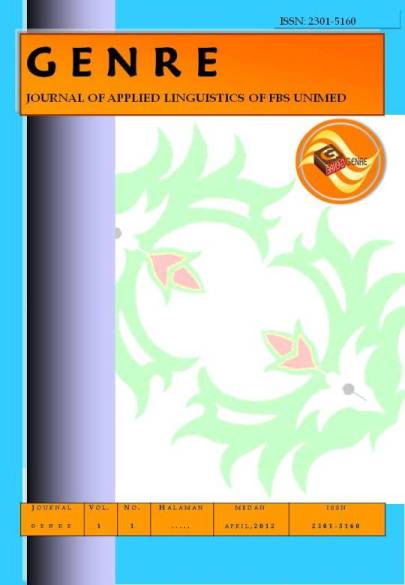IMRPOVING STUDENTS™ ACHIEVEMENT IN WRITING ANALYTICAL EXPOSITION TEXT THROUGH GUIDED WRITING TECHNIQUE
DOI:
https://doi.org/10.24114/genre.v1i1.359Abstract
ABSTRACT This study concerns on improving students™ achievement in writing analytical exposition text through guided writing technique. This research was conducted by using action research method. The subject of the study was class XI IA-1 students of SMA Negeri 17 Medan, which consisted of 36 students. The research was conducted in two cycles, which each cycle consisted of three treatments. The instruments for collecting data were quantitative data (analytical exposition writing assessment) and qualitative data (diary notes, interview sheet, observation sheet, and questionnaire sheet). Based on the students™ scores, students™ writing skill kept improving in every assessment given. The mean of the students™ score for the first competence as orientation test was 68, 12, the second competence test was 71,93, the third competence test was 79,87, and the total percentage of the improvement from the first competence test to the third competence test was 93,7%. Based on diary notes, observation sheet, questionnaire sheet, and interview report, it was found that the teaching-learning process ran well. The students were active, interested, and enthusiastic in writing. The results indicated that Guided Writing Technique improved the students™ writing achievement in analytical exposition text. Keywords: students™ achievement, writing, analytical exposition text, guided writing techniqueDownloads
Published
2012-04-01
Issue
Section
Articles
License
Copyright (c) 2012 Handayani Sagala, Bachtiar Bachtiar

This work is licensed under a Creative Commons Attribution-ShareAlike 4.0 International License.
Authors who publish with this journal agree with the following terms:
- Authors retain copyright and grant the journal right of first publication with the work simultaneously licensed under a Creative Commons Attribution License that allows others to share the work with an acknowledgment of the work's authorship and initial publication in this journal.
- Authors are able to enter into separate, additional contractual arrangements for the non-exclusive distribution of the journal's published version of the work (e.g., post it to an institutional repository or publish it in a book), with an acknowledgment of its initial publication in this journal.
- Authors are permitted and encouraged to post their work online (e.g., in institutional repositories or on their website) prior to and during the submission process, as it can lead to productive exchanges, as well as earlier and greater citation of published work (See The Effect of Open Access).
- This work is licensed under a Creative Commons Attribution-ShareAlike 4.0 International License.

